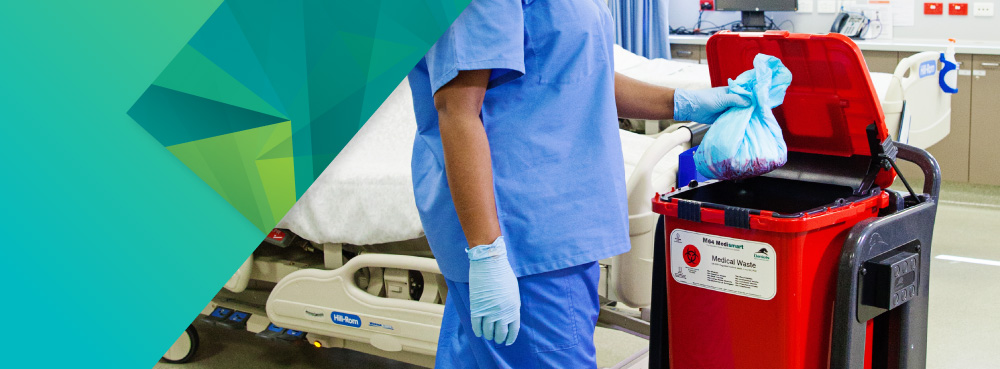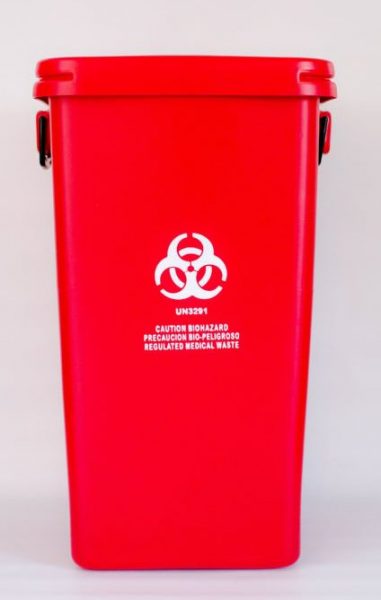Medical Waste Removal Excellence: Elevating Safety And Security Criteria in Your Center
Medical Waste Removal Excellence: Elevating Safety And Security Criteria in Your Center
Blog Article
Keep Ahead of Regulations: Expert Recommendations on Medical Garbage Disposal
In a globe where the medical care market is continuously developing, it is necessary for clinical facilities to remain ahead of policies when it comes to the proper disposal of clinical waste. From comprehending the different groups of medical waste to implementing the appropriate collection and partition methods, this conversation will provide actionable pointers and important understandings to assist centers stay in advance of policies in the ever-changing landscape of clinical waste disposal.
Comprehending Clinical Waste Categories
Comprehending clinical waste categories is crucial for appropriate disposal and management in health care centers. Medical waste describes any type of waste created by healthcare tasks that might posture a risk to public wellness or the environment. It is critical to categorize clinical waste properly to ensure its secure handling, transport, disposal, and treatment.
There are several classifications of clinical waste that medical care facilities need to be knowledgeable about. The most typical groups consist of infectious waste, pathological waste, sharps waste, pharmaceutical waste, and chemical waste. Each group has specific guidelines and guidelines for its correct monitoring and disposal.
Pathological waste refers to human tissues, organs, or body parts that require special handling and disposal. Pharmaceutical waste comprises expired, extra, or infected medicines that require cautious handling and disposal.
Staying Up-To-Date With Regulatory Changes
Staying current with governing adjustments is critical for medical care facilities to guarantee compliance and proper monitoring of clinical waste disposal. medical waste removal service. With guidelines continuously developing, it is important for healthcare centers to stay up-to-date to stay clear of charges, fines, and possible damage to the environment and public health
To remain ahead of governing modifications, healthcare centers ought to establish a system for tracking and tracking updates. This can be done by registering for regulative newsletters, attending seminars and workshops, and proactively joining market associations. In addition, centers ought to mark an employee or team accountable for staying educated and distributing details to appropriate stakeholders.
Normal communication with governing companies is additionally essential. Medical care facilities must establish connections with neighborhood, state, and federal firms to ensure they understand any type of adjustments in regulations that might influence their waste management methods. This can be done via routine conferences, engagement in public comment periods, and aggressive engagement with regulative companies.
Moreover, healthcare centers ought to take into consideration partnering with waste administration firms that focus on clinical garbage disposal (medical waste disposal services with WasteX). These business are usually well-versed in the most recent laws and can provide assistance and support to make sure conformity
Applying Proper Collection and Segregation Methods
To efficiently handle clinical garbage disposal, health care centers need to develop correct collection and partition approaches in conformity with governing standards. Carrying out these approaches makes sure the secure handling and disposal of possibly harmful products, secures the setting, and lessens the danger of infections and injuries to health care workers and the general public.
Correct collection and partition approaches include making use of designated containers and labeling systems. Healthcare centers need to give plainly labeled containers for different kinds of clinical waste, such as sharps, contagious waste, pharmaceutical waste, and non-hazardous waste. These containers ought to be color-coded and clearly significant to prevent confusion and advertise very easy identification.
Additionally, healthcare centers must train their staff on the proper treatments for gathering and segregating medical waste. This consists of informing them on the different sorts of waste, the proper containers to utilize, and the significance of adhering to standards and guidelines. Normal training sessions and correspondence course must be carried out to ensure that team members continue to be updated on ideal methods.
Furthermore, medical care facilities should develop a system for regular collection and disposal of clinical waste. This may include partnering with certified waste management business that concentrate on medical garbage disposal. These companies will certainly ensure that the gathered waste is transferred and taken care of in compliance with governing requirements.
Selecting the Right Disposal Approaches

Incineration is among one of the most effective and usual approaches for disposing of specific kinds of clinical waste, such as pathological waste and sharps. It involves the regulated combustion of waste at high temperatures, reducing it to ash. Nevertheless, incineration can launch dangerous contaminants into the air and add to air pollution.

Chemical therapy involves the use of chemicals to reduce the effects of the waste and sanitize. Microwave therapy makes use of microwave power to warmth and decontaminate the waste.
Ensuring Compliance Through Documentation and Training
After thoroughly thinking about the proper disposal techniques for clinical waste, health care facilities need to make sure conformity with guidelines and lessen ecological effect by carrying out efficient paperwork and training procedures. This step is essential in maintaining a lasting and risk-free atmosphere for both health care workers and the public.

Medical care employees that take care of clinical waste needs to obtain ideal training on read this post here waste partition, handling, and disposal treatments. By providing comprehensive training, healthcare facilities can empower their team to make enlightened choices and decrease the threat of inappropriate waste disposal.
Verdict
In final thought, remaining ahead of policies in medical garbage disposal is crucial for medical care centers. medical waste removal near me. Understanding the various classifications of medical waste, remaining updated with regulatory modifications, applying correct collection and segregation methods, choosing the ideal disposal techniques, and making sure compliance via documents and training are all necessary steps. By following these standards, health care companies can successfully get rid of and manage of clinical waste in a liable and risk-free manner
From comprehending the different groups of medical waste to applying the ideal collection and segregation approaches, this discussion will certainly offer actionable ideas and valuable understandings to help facilities stay ahead of regulations in the ever-changing landscape of clinical waste disposal. - medical waste disposal services with WasteX
The most common classifications consist of contagious waste, pathological waste, sharps waste, pharmaceutical waste, and chemical waste. Health care centers should offer clearly classified containers for different types of clinical waste, such as sharps, infectious waste, pharmaceutical waste, and non-hazardous waste. Healthcare facilities must develop a thorough system to record and track all aspects of medical waste disposal, including types of waste generated, quantities, and disposal methods used. Healthcare workers that handle clinical waste needs to obtain appropriate training on waste partition, handling, and disposal treatments.
Report this page